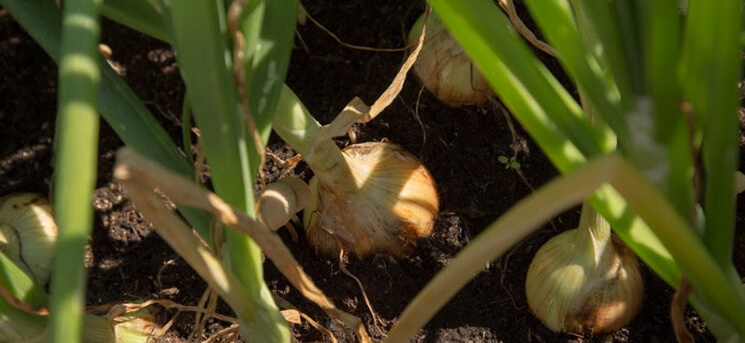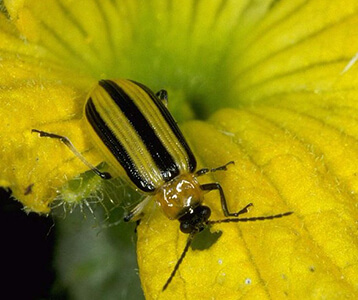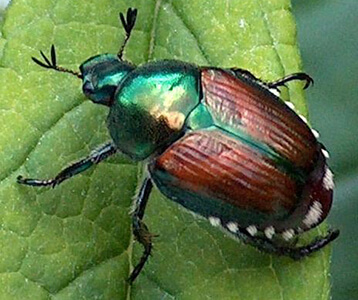
The most common tomato problems are leaf spot or early blight, late blight, and bacterial wilt. The simplest organic treatment is – as always – your presence in the garden. Remove any affected leaves, practice good hygiene and keep the garden clean and weeded. You can also spray plants with 3% hydrogen peroxide to kill any spores. To see more check out my video. You want to also watch for blossom end rot. This is a big, leathery bruise at the bottom of the tomato that ruin the fruit. This is a sign of lack of calcium. Simply apply some high calcium fertilizer like Chicken manure to fix. Simply apply just a little a the base of the plan making sure not to put any on the leaves. Some gardeners will also add lime to the garden or add eggshells to their compost, or grind them and place them around their tomatoes to add calcium to the garden.
Cucumber beetle is a current problem is some gardens. Adult cucumber beetles are 5 mm (¼”) in length, greenish yellow and are identified differently by their backs. Most of the cucumber beetles we see here are striped, although there are spotted ones as well. The cucumber beetle feeds on the nectar of cucumber, squash and melon flowers. The larvae suck the sap of the plants. The greatest damage comes from bacterial wilt which the cucumber beetles carry. It can wipe out an entire plant very quickly. It is important to control cucumber beetles early in the season. Once a population gets established in your garden, it is very difficult to get rid of them. Your presence is the garden is your best tool. You can remove them manually from the garden, and check under leaves squishing their egg with your nail. You can also place yellow sticky traps in the garden.
Japanese beetle has also been very present in the gardens. It is an invasive species without a lot of options and no natural predators. Fortunately they are slow and easily trapped by shaking the affected plants over a bucket of soapy water. To be effective, shake daily. An application of nematodes in the spring and fall can help control population. However, it is recommended to do a second application in the spring.
Upcoming September 17th: Fruit tree workshop! We will also be discussing shrubs: learn how to care for your blueberries, raspberries and currants. Buy your tickets by clicking here or reserve by replying to this email. This workshop will also be offered in french.
We have started our fall planting! Lettuce is now available for sale in our greenhouse. Fill out your garden with some tasty leafy greens or get someradish seed for one last spicy crop harvest. If you have any plants that are not doing well, this is a great opportunity to remove them and plant something productive in their stead.
We hope to see you at the fruit tree workshop!

